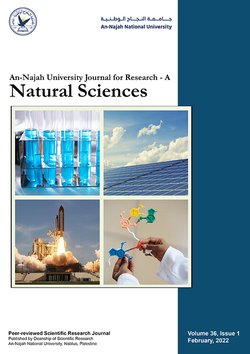The Effects of Substrate Material, Quenching and Annealing on the Properties of High Temperature Superconductor BSCCO (Bi-2212) Thick Tapes
Authors:
Article info
6 - 22
Keywords
Abstract
The effects of substrate material and heat treatment conditions on the electrical and thermal properties for partially melt-solidified superconducting tapes BSCOO (2212), grown on single crystal MgO and Ag MgO substrates m were investigated. Results show that the resistivity of the normal state varies with the size and orientation of the grains. It is found that larger grains lower both the concentration of second phases and the grain boundaries, hence decreasing the resistivity of the normal state and enhancing the critical current density of the superconducting state. Also, the material of the substrate has no effect on either the resistivity or the critical current density of the Bi-2212 phase. Heat treatment conditions and the annealing atmosphere play an important role in determining the critical current density and the transition temperature. Slow cooling from 840°C lowers both the critical current and the transition temperature; while quenching the sample from 840°C to room temperature and annealing it in a nitrogen atmosphere increase both the critical current density and the transition temperature.
Saleh, A. A.-K., & Haase, D. (1996). The Effects of Substrate Material, Quenching and Annealing on the Properties of High Temperature Superconductor BSCCO (Bi-2212) Thick Tapes. An-Najah University Journal for Research - A (Natural Sciences), 10(1), 6–22. https://doi.org/10.35552/anujr.a.10.1.404
[1]A. A.-K. Saleh and D. Haase, “The Effects of Substrate Material, Quenching and Annealing on the Properties of High Temperature Superconductor BSCCO (Bi-2212) Thick Tapes,” An-Najah University Journal for Research - A (Natural Sciences), vol. 10, no. 1, pp. 6–22, Jan. 1996, doi: 10.35552/anujr.a.10.1.404.
Saleh, Abed Al-Kariem, and Dived Haase. “The Effects of Substrate Material, Quenching and Annealing on the Properties of High Temperature Superconductor BSCCO (Bi-2212) Thick Tapes.” An-Najah University Journal for Research - A (Natural Sciences), vol. 10, no. 1, Jan. 1996, pp. 6–22. Crossref, https://doi.org/10.35552/anujr.a.10.1.404.
1.Saleh AAK, Haase D. The Effects of Substrate Material, Quenching and Annealing on the Properties of High Temperature Superconductor BSCCO (Bi-2212) Thick Tapes. An-Najah University Journal for Research - A (Natural Sciences) [Internet]. 1996 Jan;10(1):6–22. Available from: http://dx.doi.org/10.35552/anujr.a.10.1.404
Saleh, Abed Al-Kariem, and Dived Haase. “The Effects of Substrate Material, Quenching and Annealing on the Properties of High Temperature Superconductor BSCCO (Bi-2212) Thick Tapes.” An-Najah University Journal for Research - A (Natural Sciences) 10, no. 1 (January 1996): 6–22. https://doi.org/10.35552/anujr.a.10.1.404.
الفائقة الموصليةBSCCO تأثير نوعية المفترش (الطبقة التحتية) والمعاملة الحرارية على خصائص شرائح
المؤلفون:
معلومات المقال
6 - 22
الكلمات الإفتتاحية
الملخص
The effects of substrate material and heat treatment conditions on the electrical and thermal properties for partially melt-solidified superconducting tapes BSCOO (2212), grown on single crystal MgO and Ag MgO substrates m were investigated. Results show that the resistivity of the normal state varies with the size and orientation of the grains. It is found that larger grains lower both the concentration of second phases and the grain boundaries, hence decreasing the resistivity of the normal state and enhancing the critical current density of the superconducting state. Also, the material of the substrate has no effect on either the resistivity or the critical current density of the Bi-2212 phase. Heat treatment conditions and the annealing atmosphere play an important role in determining the critical current density and the transition temperature. Slow cooling from 840°C lowers both the critical current and the transition temperature; while quenching the sample from 840°C to room temperature and annealing it in a nitrogen atmosphere increase both the critical current density and the transition temperature.
Saleh, A. A.-K., & Haase, D. (1996). The Effects of Substrate Material, Quenching and Annealing on the Properties of High Temperature Superconductor BSCCO (Bi-2212) Thick Tapes. An-Najah University Journal for Research - A (Natural Sciences), 10(1), 6–22. https://doi.org/10.35552/anujr.a.10.1.404
[1]A. A.-K. Saleh and D. Haase, “The Effects of Substrate Material, Quenching and Annealing on the Properties of High Temperature Superconductor BSCCO (Bi-2212) Thick Tapes,” An-Najah University Journal for Research - A (Natural Sciences), vol. 10, no. 1, pp. 6–22, Jan. 1996, doi: 10.35552/anujr.a.10.1.404.
Saleh, Abed Al-Kariem, and Dived Haase. “The Effects of Substrate Material, Quenching and Annealing on the Properties of High Temperature Superconductor BSCCO (Bi-2212) Thick Tapes.” An-Najah University Journal for Research - A (Natural Sciences), vol. 10, no. 1, Jan. 1996, pp. 6–22. Crossref, https://doi.org/10.35552/anujr.a.10.1.404.
1.Saleh AAK, Haase D. The Effects of Substrate Material, Quenching and Annealing on the Properties of High Temperature Superconductor BSCCO (Bi-2212) Thick Tapes. An-Najah University Journal for Research - A (Natural Sciences) [Internet]. 1996 Jan;10(1):6–22. Available from: http://dx.doi.org/10.35552/anujr.a.10.1.404
Saleh, Abed Al-Kariem, and Dived Haase. “The Effects of Substrate Material, Quenching and Annealing on the Properties of High Temperature Superconductor BSCCO (Bi-2212) Thick Tapes.” An-Najah University Journal for Research - A (Natural Sciences) 10, no. 1 (January 1996): 6–22. https://doi.org/10.35552/anujr.a.10.1.404.

Since 2019
Cite Score (Scopus): 0.8
Time to First Decision: 5 Days
Submission to Acceptance: 90 Days
Acceptance to Publication: 14 Days
Acceptance Rate: 22%
Call for Papers:
Sustainable Materials and Chemistry for Energy and Environmental Applications
Why should you
Publish With Us?
An-Najah National University
Nablus, Palestine
Nablus, Palestine
- P.O. Box
- 7, 707
- Fax
- (970)(9)2345982
- Tel.
- (970)(9)2345560
- (970)(9)2345113/5/6/7-Ext. 2628
- [email protected]
- EIC
- Prof. Waleed Sweileh
An-Najah University Journal for Research - A (Natural Sciences) by An-Najah University, Nablus, Palestine is licensed under CC BY-NC 4.0

